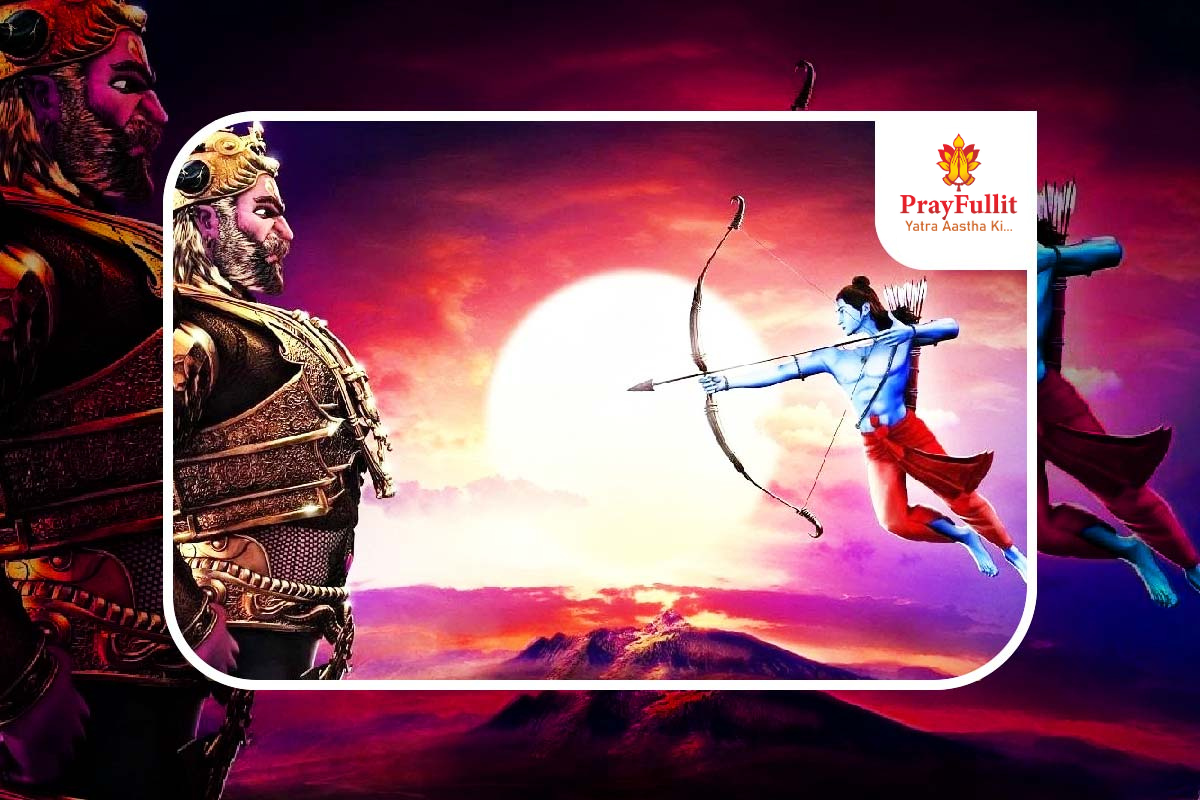
Vijayadashmi, also known as Dussehra, is a major Hindu festival celebrated at the end of Navratri, marking the victory of good over evil. It generally falls on the 10th day of the Ashwin month (September-October) according to the Hindu lunar calendar. The festival symbolizes the triumph of Lord Rama over the demon king Ravana, as well as the victory of Goddess Durga over the buffalo demon Mahishasura.
Key Features
Triumph of Good Over Evil:- Vijayadashmi commemorates Lord Rama’s victory over Ravana, representing the ultimate triumph of righteousness and virtue.
End of Navratri:- It concludes the nine-day festival of Navratri, which is dedicated to the worship of Goddess Durga.
Celebration of Knowledge:- In some regions, Vijayadashmi is also associated with the worship of knowledge and learning, symbolized by the ritual of Vidyarambham (beginning of education for children).
Materials Needed for Vijayadashmi Pooja:
Idols or Images:- Of Lord Rama, Goddess Durga, or other deities.
Puja Essentials:- Flowers, garlands, incense sticks, diya (lamp), and a bell.
Sacred Offerings:- Fruits, sweets, and other items like coconuts and grains.
Red or Yellow Cloth:- For decorating the altar or deities.
Books:- If performing Vidyarambham, have books and writing materials ready.
Steps for Vijayadashmi Pooja:
Preparation:- Choose an auspicious time for the puja. Clean the area where the puja will be performed and set up the altar or puja space.
Decorate the Altar:- Decorate the deities with flowers, garlands, and a red or yellow cloth.
Perform the Puja:- Light the diya and incense sticks to create a sacred atmosphere.
Offerings:- Offer fruits, sweets, and other sacred items to the deities. Place them in front of the idols and present them with reverence.
Recitation and Prayer:- Recite relevant hymns or prayers that celebrate the victory of good over evil, such as the Ram Charit Manas or Durga Saptashati.
Vidyarambham (Optional):- If observing Vidyarambham, initiate children into learning by having them write or recite alphabets or simple prayers in front of the deity. This is often done with the help of a teacher or elder.
Distribution of Prasad:- Distribute the prasad (sacred food offerings) to family members and guests.
Celebration:- Vijayadashmi is often marked with cultural events, processions, and community celebrations. In many regions, large effigies of Ravana are burnt in public displays symbolizing the destruction of evil.
Regional Variations:
North India:- Vijayadashmi is celebrated with dramatic reenactments of the Ramayana, including the burning of effigies of Ravana, Meghnath, and Kumbhkaran.
South India:- The festival is often marked by traditional dances, music, and elaborate decorations.
Western India:- In Gujarat and Maharashtra, the festival is also associated with the end of Navratri and the celebration of Garba and Dandiya dances.
Vijayadashmi is a festival rich in cultural and religious significance, celebrating the victory of righteousness and the values of truth and virtue.
1 Pandit ji will come and perform the Pooja, total procedure goes on for 1 hour 30 minutes.